In a hotel room somewhere in London, Saoirse Ronan lies on a sofa, her back rigid against one of its arms, her legs straight out in front of her. She looks a bit like a doll: one that has joints at its hips, but not at its knees.
“Sorry,” she says, seemingly unable to get up as I offer her my hand. “It’s these clothes! They’re not mine, and I can’t walk in them.”
In an interview she gave not so long ago, Ronan insisted that away from the film sets and the red carpets, she looks a bit like a mother of one who’s “gone mad” in Anthropologie [an American clothing retailer]. Her mufti comprises “a lot of knit and some pink slacks that are very comfy”.
Not today, though. Today, she is straight out of the last days of disco: her high-waisted, flared jeans are tighter than tight; her vertiginous velvet platforms are encrusted with coloured crystals. To get from where she is to the bottles of mineral water that are arranged on a table less than half a yard away, she could really do with wheels, or some kind of winch.
I'd been warned that as a female actor, I was probably not going to get work for three or four years at least
Not that she isn't used to this stuff: the restrictions of costume. In her latest film, Mary Queen of Scots, her skirts could hardly be bigger, nor her wigs more elaborate. Did she have to be lowered into her dresses? As I watched, distracted by her latest ruff or some gorgeous little bodice of finest navy corduroy, this was something I occasionally wondered about.
“Well, you’re not far wrong,” she says. “Sometimes we did, yes. It would take 45 minutes to get dressed, and then hair and makeup for an hour and a half. Alex [Alexandra Byrne, the film’s costume designer] didn’t want us to crease our skirts, so she had these little swivel stools for us: we would pick up our hoops, swing our legs over it, and then drop the skirt right over it. That way, we got to sit down. But of course you use the feeling the clothes give you. Sometimes, you fight the restriction. Other times, you move with it, in a new way.
“Wayne McGregor [the choreographer] worked with us on movement, and for me that was the most essential part of our prep: how we’d move in a public setting, and in a private one.”
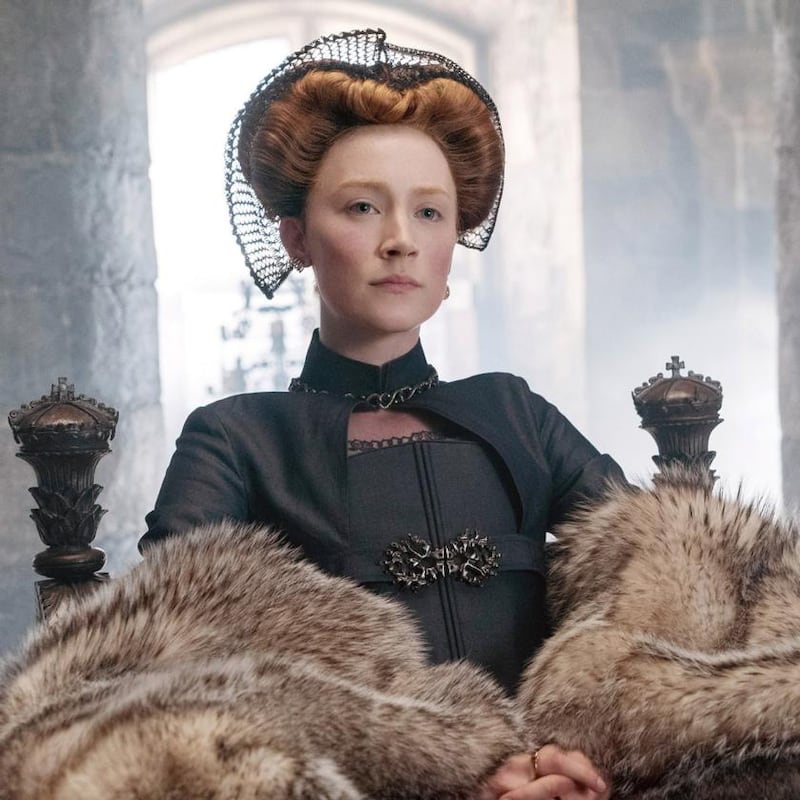
Ronan waited and waited to make Mary Queen of Scots. Its producers, Tim Bevan and Eric Fellner of Working Title, first approached her about the role five or six years ago: "And I was so delighted and relieved, because I'd been warned that as a female actor, I was probably not going to get anything for three or four years at least."
What? She’s only 24 now. I thought it was only older actresses – by which I mean, I suppose, those over about 35 – who find the parts suddenly drying up.
“No, seriously,” she says, eyes widening. “There are more films being made now about girls and women, but even six years ago, people didn’t know what to do with an older teenage girl who was about to go into her 20s. No scripts were being written about that experience, which I find mad, because so much has happened to me in the past few years. I don’t know why you wouldn’t want to write about that.
"But yes, I'd been told by older actors: you're grand now, but when you get to 18 there won't be anything – and there wasn't. There was nothing. I was lucky The Grand Budapest Hotel [Wes Anderson's 2014 comedy] came along, but mostly it was just the girlfriend, the neighbour, the sister: characters that are not fleshed out. So when they asked if I wanted to play a Scottish queen… it was brilliant."
![“I was lucky The Grand Budapest Hotel [Wes Anderson’s 2014 comedy] came along,” says Saoirse Ronan](https://www.irishtimes.com/resizer/v2/NQVLLH3DV6LXTMDHBAAVJJ3C3M.jpg?auth=a584fb79b4a22fc89c097cf5e514a25d1fcdd552d7ee84f0d97ef106eb49be43&width=800&height=800)
For several years, though, nothing happened. “It was always: we’ll do Mary this year. And then we never did. I’d been thinking about it for so long, it almost felt like a fantasy. Playing her was a huge responsibility. She is so loved. But I was nervous mainly because of the wait. Selfishly, I just really wanted to do a good job.”
What did she know about Mary Stuart before she started – apart from the fact that, having been implicated in a plot against her rival, Elizabeth I, she had her head chopped off?
“Not loads. I knew what a lot of people think, which is that she was very emotional, and she didn’t know how to rule, neither of which is really true. I mean, there’s a lot to tell. I don’t know whose decision it was to adapt John Guy’s biography – whether it was Beau [Willimon, the film’s screenwriter] or Josie [Rourke, its director, who is about to step down after eight years running the Donmar Warehouse theatre] – but our film concentrates only on a small part of her life. Reading that book… I remember sitting at the kitchen table, and the first few pages read like a thriller.”
The Rourke/Willimon version of Mary’s life begins in 1561, when the 16-year-old queen, following the death of her husband King Francis II, arrives in Scotland from France to reclaim its throne. It takes in her struggle to rule as a Catholic in a Protestant-led country; her quashing of (and, later, her failure to quash) various rebellions among her noblemen; and, above all, her determination that her cousin, Elizabeth I (played with aplomb and a great deal of face powder by the Australian actor Margot Robbie), name her as her heir.
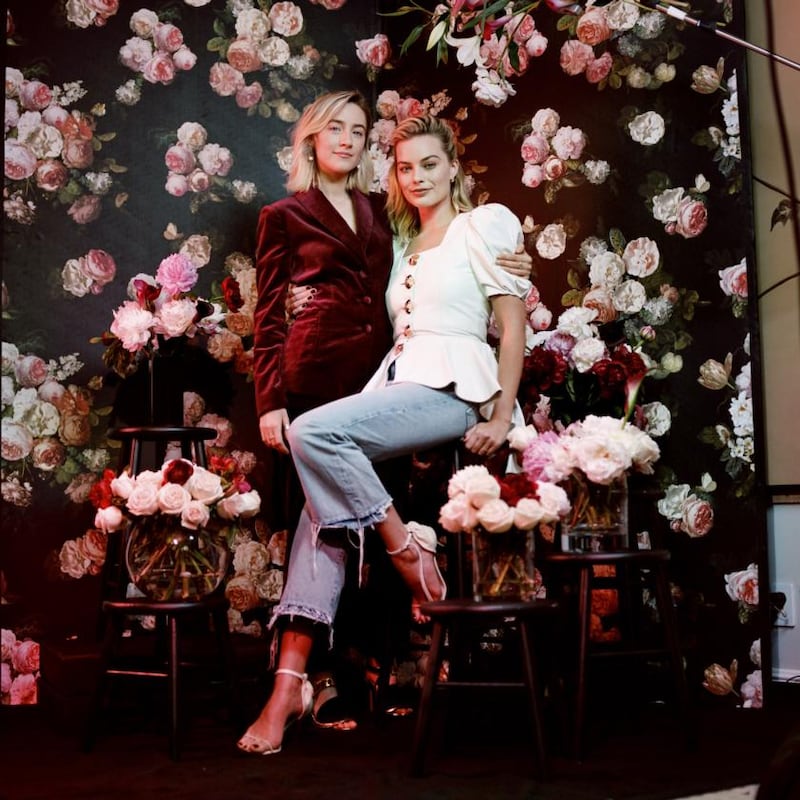
Much is made of her disastrous marriage to Lord Darnley, whom Willimon depicts not only as a drunk, but also as the lover of his wife’s minstrel, David Rizzio – and of Mary’s tolerance of Rizzio’s sexuality (the Scottish queen is depicted as a kind of proto-feminist whose liberal instincts are almost as devoutly felt as her Catholic faith). It also includes a scene, once Mary has been forced to abdicate and has fled south to England, in which the two queens finally meet – something that never happened in real life (Mary died in 1587 without ever having met her cousin).
“Oh, when Margot and I did that scene!” says Ronan. “That was my first day [on set], and it was her last day.”
Really? For the second time, I have to stop her. This seems… preposterous. It is arguably the film’s key scene, and one of such high emotion (too high, some might say). How did they do it cold, without any build-up?
“I know! I was thinking: this comes at the end of this whole film that everyone will have watched, and which we haven’t even shot yet. I need to carry all this emotion that I haven’t experienced yet. I had all this adrenaline, and all these nerves, and I was really using them. We didn’t rehearse, and we kept apart. I didn’t know what Elizabeth would look like, and Margot didn’t know what Mary would look like. The first half of the scene [in which the two queens skirt theatrically around each other, the one always hidden from the other’s view by screens of muslin] we didn’t see each other, and then I pulled the sheet down and there she was, and there was this incredible buzz: like, f**k, we’ve been waiting months, years, for this – and of course, she looks so extreme, and so different from Mary who is natural and wild. Elizabeth had become this kind of statue – and a kind of sympathy [on Mary’s part] comes out of that.”
Ronan began acting when she was eight or nine, in the RTÉ medical drama The Clinic. She has, then, been working as an actor for two-thirds of her young life, and it would be easy to assume that this might be one reason why she seems to have such a sense of connection with Mary Stuart, whose every move was also lived in public. But she doesn't see it this way at all.
“The experiences I was having were different from most other young people of my age,” she says, “but I wasn’t in a big Disney show where I was, like, a superstar – and I wasn’t in Harry Potter, either. I wasn’t famous. I was just a kid who was in stuff, and was very lucky to be that.”
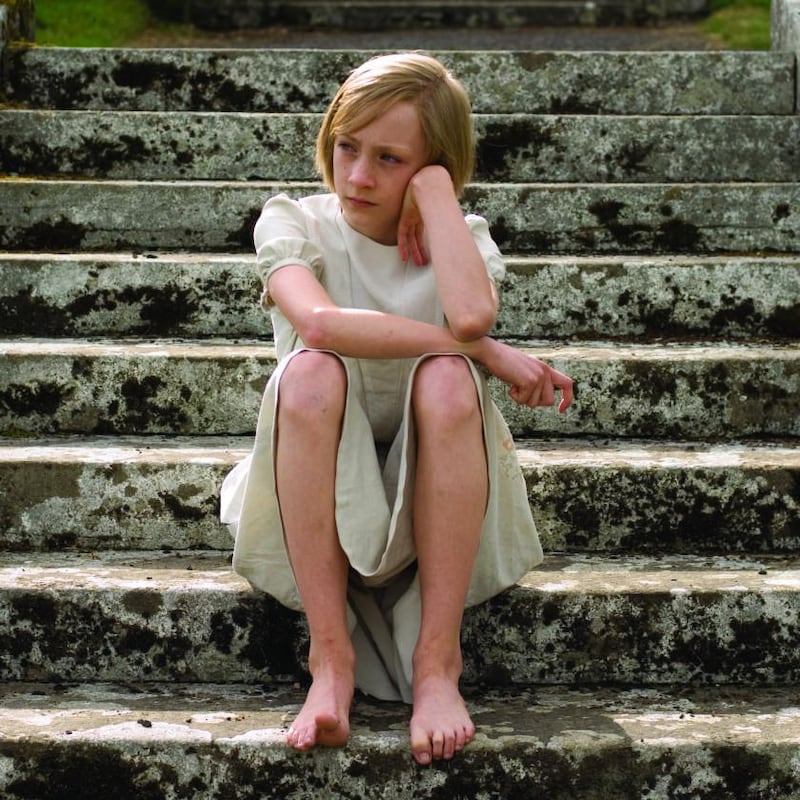
Though she was nominated for an Oscar for her role as Briony Tallis in Joe Wright's adaptation of Ian McEwan's novel Atonement, at the age of only 13, she insists that she wasn't known at all until 2015, when she starred as Eilis Lacey in Brooklyn, (another role for which she was nominated for an Oscar). "I'll always have that mentality of 'no one knows who I am' – and I like that." Until quite recently, she still worried when she wasn't working. Would everyone forget her? "I've definitely felt that in the past. But then I watched an interview with Kate Bush after she went away. No one forgets about Kate Bush. She does her thing, and then she disappears. Adele does it, too, and Daniel Day-Lewis. It's clever, I think, and healthy."
There was, she insists, never any danger of her becoming a troubled child star – or even a troubled former child star.
“I had such a brilliant mam and dad [her father, Paul, is an actor, too] and great agents with their own kids, and they were all very aware of how it could turn out, and there is no way in hell my mam would have ever allowed anything to happen. If she’d seen any flash of that, I would have been pulled out. I had a wonderful combination of being encouraged, and being brought back to normal life as soon as the job was done. I’d work for a couple of months – that gave me a fantastic work ethic – but then I’d go home and back to school, and there’s no one more down to earth than other kids, do you know what I mean? Luckily, it wasn’t teenagers. But it was all: this is the new game we’re playing, and this is the new word everyone’s using, and this is where we are up to in maths. I wouldn’t have been allowed to get a big head.”
Later, as her career built, she was home tutored. “I was away so much. But once I was in my late teens, everyone else had left school, too, and I was excited for my friends to go to college and get jobs because then it would be: great, we’re all working now.”
Does she still have friends from that time? “Yes, two of my oldest are still my best mates. Christopher is my dad’s best friend’s son, and Amy is my mam’s best friend’s daughter. We all grew up together. Amy is brilliant. She would see things I was in, but she has definitely fallen asleep in two of them.” She laughs. “She only really got excited when I worked with Ryan Gosling – and then she was interested, because she loves Ryan.”
People think you only exist on the telly; that you're not a real person, and so it doesn't matter
She can, she says, disappear quite easily out on the streets – though less so in Ireland, where she lives in Co Wicklow.
“A lot of people know me. It’s a small country. That’s just the way it is. But anywhere else, yes, I can be invisible – though on the tube I do get people looking hard at their mobile phones, and really they’re surreptitiously taking a picture of me. You’re staring at them, and you’re thinking: I can see you. But some people think you only exist on the telly; that you’re not a real person, and so it doesn’t matter. I would never do that myself – it would feel like you’re stealing from someone.”
She’s not on social media any more, and she doesn’t read reviews.
“I don’t expose myself to them. There will be something that sticks in my head, because it’s not a natural, normal thing for people you don’t know personally to write about you” – I nod my head, perhaps because our own encounter seems so bizarre, the two of us closeted in this wireless and slightly sterile hotel room, like a pair of lovers (except that right outside the door are three minders, each of them furiously tapping at their mobile phones) – and she says, almost apologetically: “Well, it can be lovely having a chat. But reviews, they’re not written for me.”
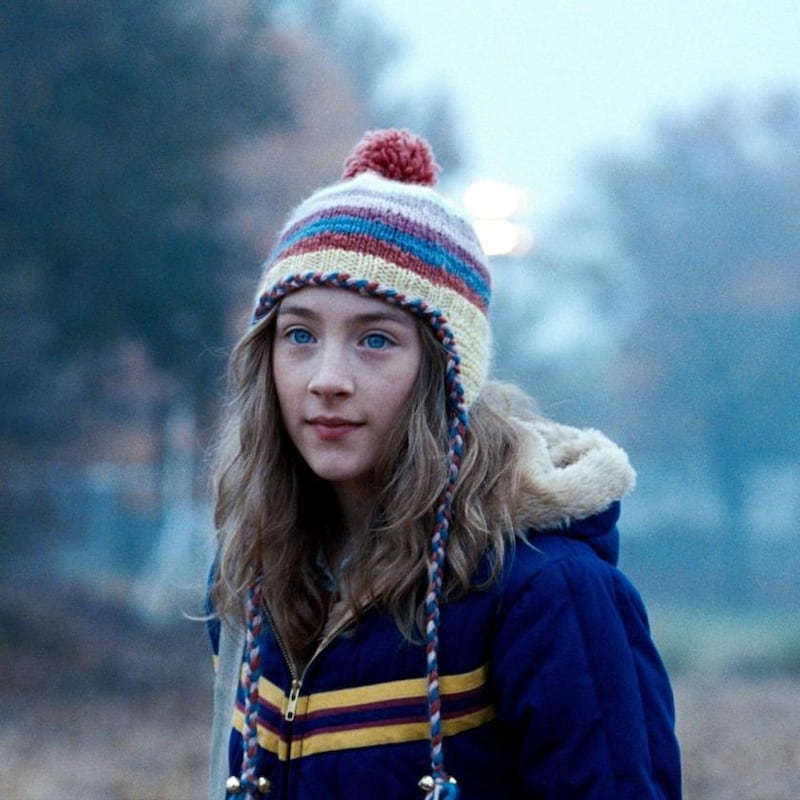
Ronan never trained as an actor; she learned on the job. What is her secret? How is she able to disappear so completely into her character?
“It’s how to describe how I work,” she says. “But I think the whole idea of disappearing stemmed from being an only child and spending a lot of time in my own world. Every kid does that, but I spent more time on my own. It was normal for me to pretend I was in a scene, and I would do it all the time.
"Peter Jackson [the director, with whom she worked on The Lovely Bones] is an only child, and he is such a dreamer, too. In hindsight, what I loved about Bryony in Atonement was that she had this over-active imagination. Honestly, the amount of people who came up to me for years afterwards and said: 'She's such a bitch, isn't she?' But I was, like, no, she's just misunderstood." She shakes her head. "I've played a lot of weird people. I have!"
This brings her to Christine McPherson, the teenager she played in Greta Gerwig's 2017 film Lady Bird, for which she won a Golden Globe and was, again, nominated for an Oscar.
"I was so knackered when I was doing it," she says (she came to it straight from starring on Broadway in The Crucible). "My skin was in sh*t. But when you're tired, something else comes out in you. You're defensive and lethargic, and everything bubbles up to the surface. It freaked me out a bit, but my mam said: 'She's 17 and she hates everyone except her friends, and she's a bit narky. It's perfect.'"
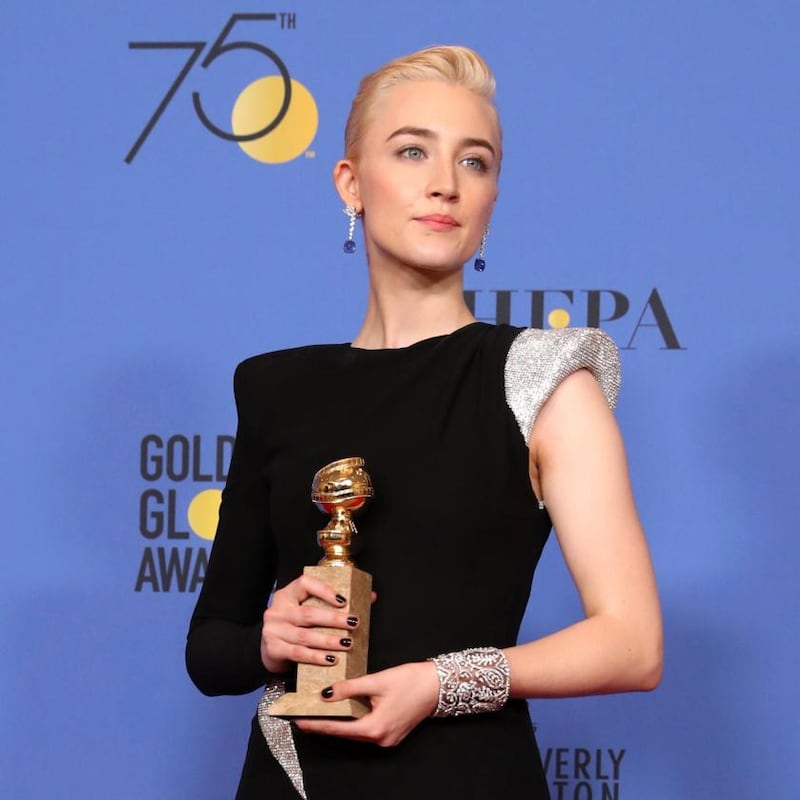
She's now shooting another film with Gerwig: Little Women, in which she plays Jo. Is it any different working with a woman director? She gives me a very direct look. "Honestly? No. I just want them to be happy. They're leading the way. It's their vision. With any director, it feels like a pupil-teacher relationship, or a parent-child one."
She’s weary of being asked about #MeToo. She has always felt safe in her world; she’s never had any trouble. She’s more interested in something I bring up: the recent comments of the Danish director, Susanne Bier, about how looks are the last taboo in Hollywood (Bier has spoken of her struggle to persuade studios to let her cast actors who do not conform to their idealised image of beauty). Ronan believes Bier is absolutely right – though this state of affairs obviously affects women far more than men.
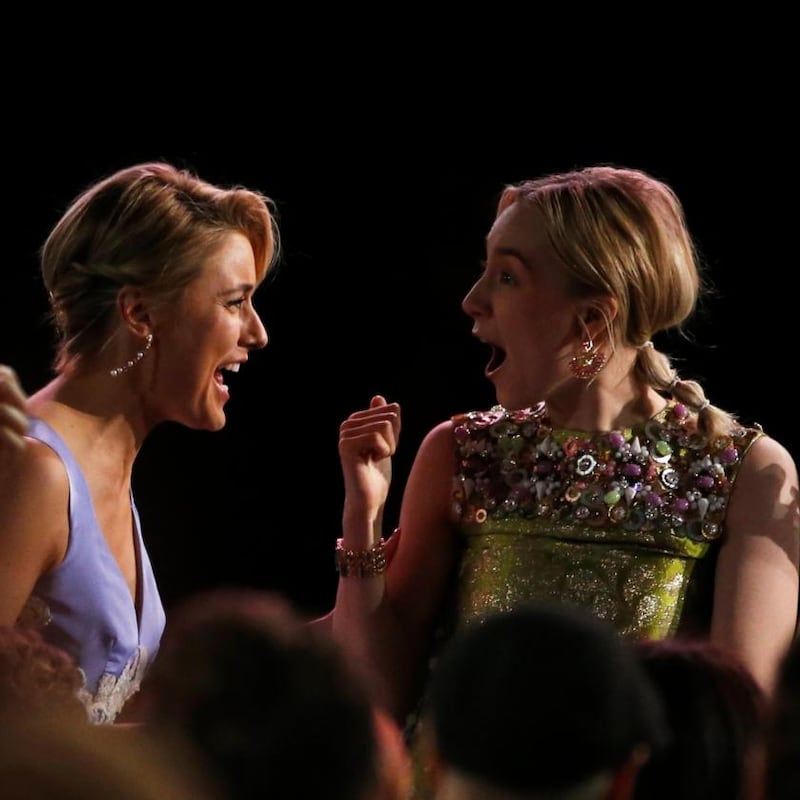
“Yes, yes,” she says. “So many male actors are odd-looking, and they’re just considered to be interesting, and they have amazing careers, and they play romantic figures. But I wonder: does that just maybe go back to how women view men? We are, in general, more forgiving. We want to see the good [in men]. Women in relationships hold on to so much hope. ‘OK,’ they think. ‘He looks like this, but I can see this. I can see something else no one else can.’ It’s a deep thing, and it’s hard to say if it will shift.”
Television, she thinks, is far more advanced on this score than film. "I was watching Roseanne recently and there's a scene with Laurie and the rest, and they're drinking and chatting and they're all normal-looking. What I loved, as someone who isn't Marilyn Monroe, was to see Lena Dunham in Girls. That meant so much. What we found with Lady Bird is that, while it's a brilliant film and everyone is so great in it, in the end the reason why it could have an effect on the industry is because it made money."
Does she feel under pressure about her own looks? “I really don’t. I suppose I was playing girls from an early age that had nothing pretty about them – they were weird or they were tomboys – and in order to do a good job I just had to go: well, f**k how I look. I never got cast for my looks anyway.”
We talk for a while about how Ireland has changed ("Oh, yes!" she all but shouts when I bring it up). Before the referendum that led to the repeal of the eighth amendment, Ronan appeared in a video supporting the reproductive rights campaign. Did she think twice about speaking out? Not exactly. But these things are complicated.
I remember thinking that even though repealing the Eighth was the right thing, maybe I shouldn't say anything. That was the way it had always been
“When I was younger, and there were petitions to repeal the Eighth, I remember thinking that even though it was the right thing, maybe I shouldn’t say anything. This was the way it had always been – and that’s being honest about it. But then you get older, and you come into your own womanhood and you realise how complicated and amazing being a woman is, and how protective you feel of your own body. The idea that anyone could have a say over that is bizarre. I’ve had friends who had to go through it – travel to Liverpool for an abortion, spend thousands of euros, put yourself in the Holiday Inn…”
The new Ireland thrills her. “To know it was seen as this backward place, when it never felt like that to us. It was so disappointing. But now we match up internationally to how we see ourselves, and that feels amazing.
“The church is still a massive presence. But it is changing. It doesn’t have the same grasp it used to. I can’t imagine what it was like for gay people. During the marriage referendum , I spoke to people who said they’d spent 40 years in the closet at home, and yet they could be out everywhere else. It has been incredible. We’ve done the country proud.”
She grins. “Is there any Irish in you?” she asks, our minds seemingly turning at precisely the same moment to Brexit. I shake my head, sadly. “Ah, don’t worry,” she says. “I’ll get you a passport.” She sounds so very sincere that when her hands go to the waistband of her jeans, still cutting her in two, I half expect her to pull one miraculously from her pocket. – Guardian
Mary Queen of Scots is in cenemas now



















